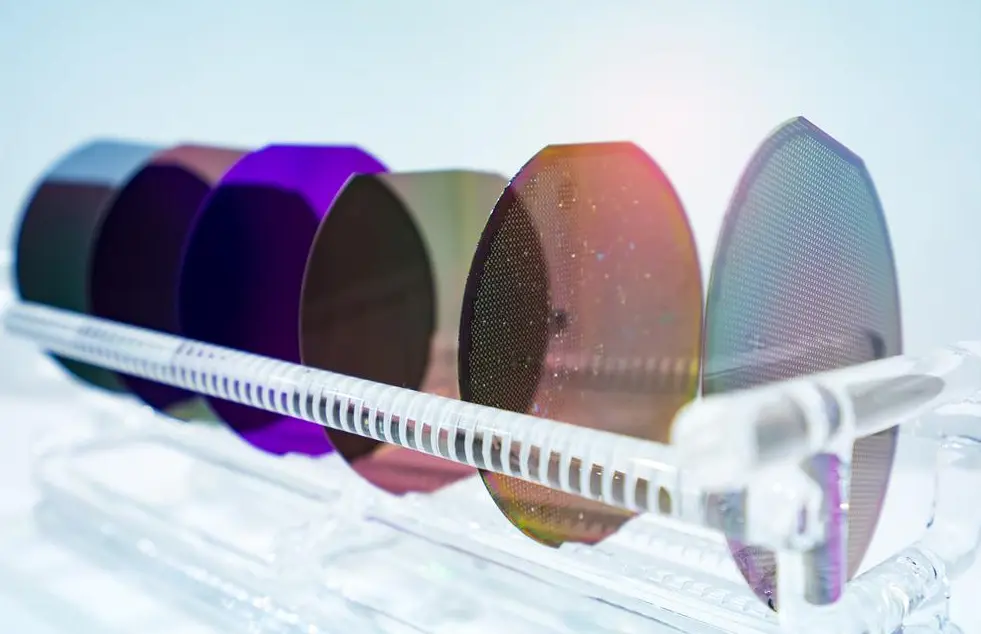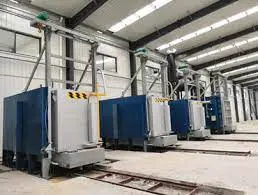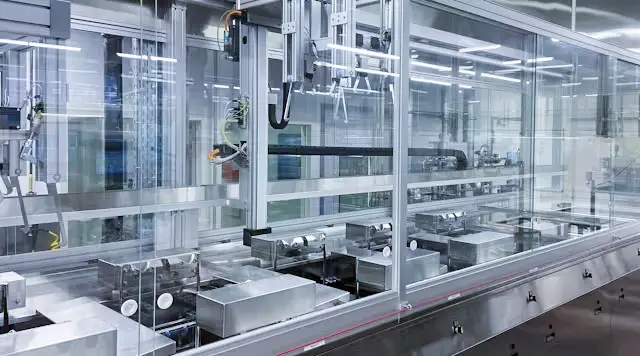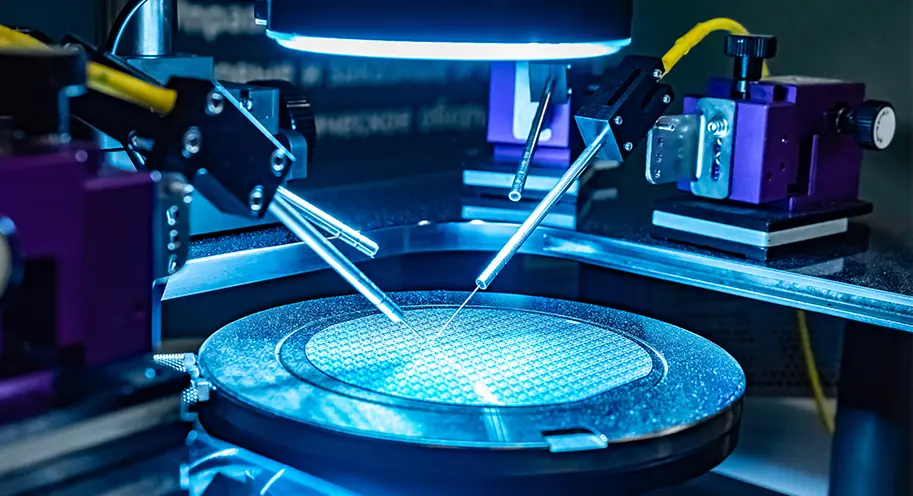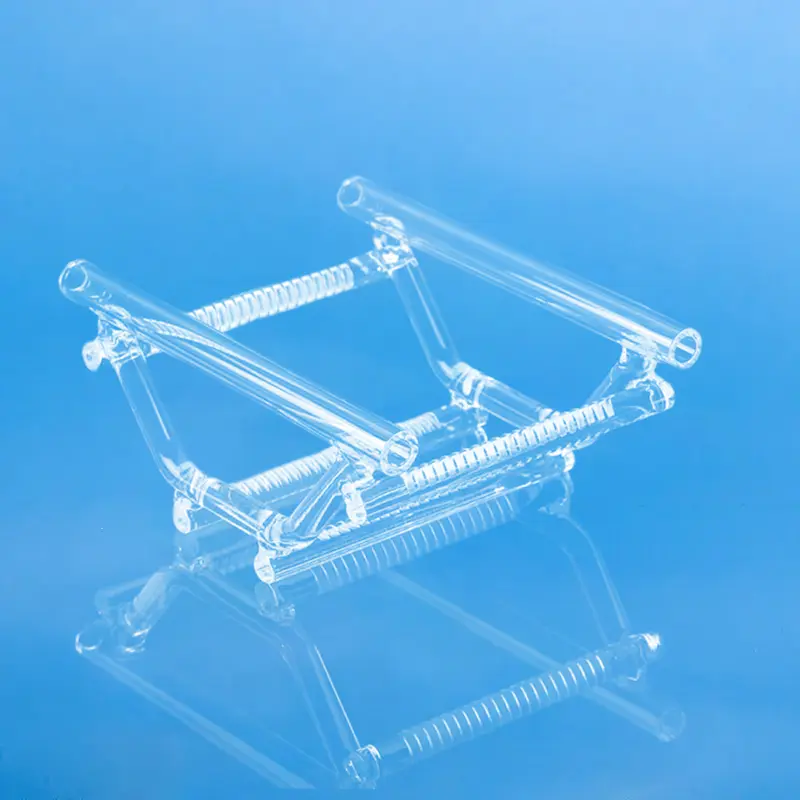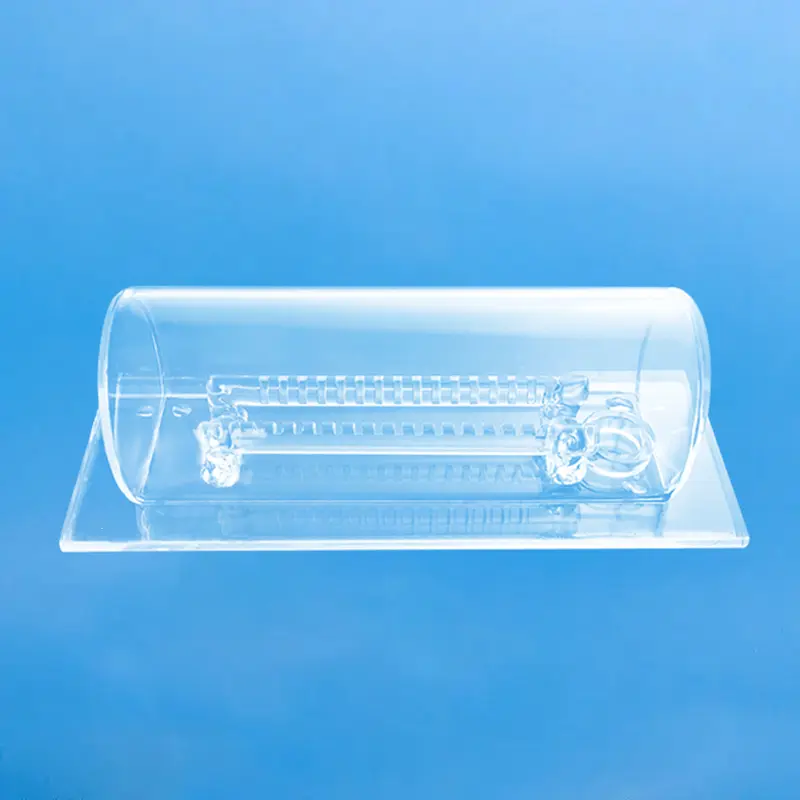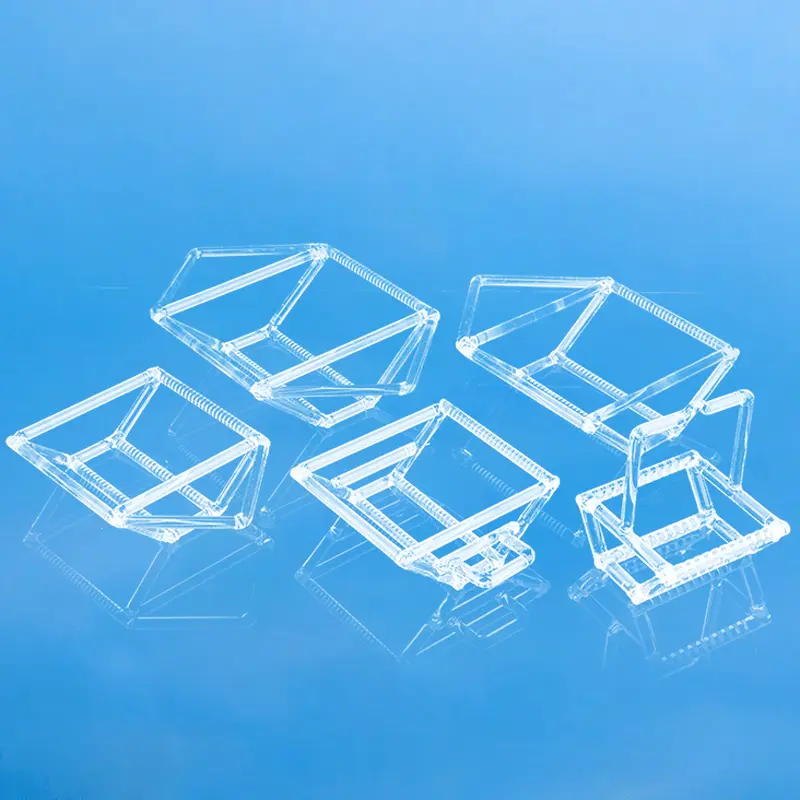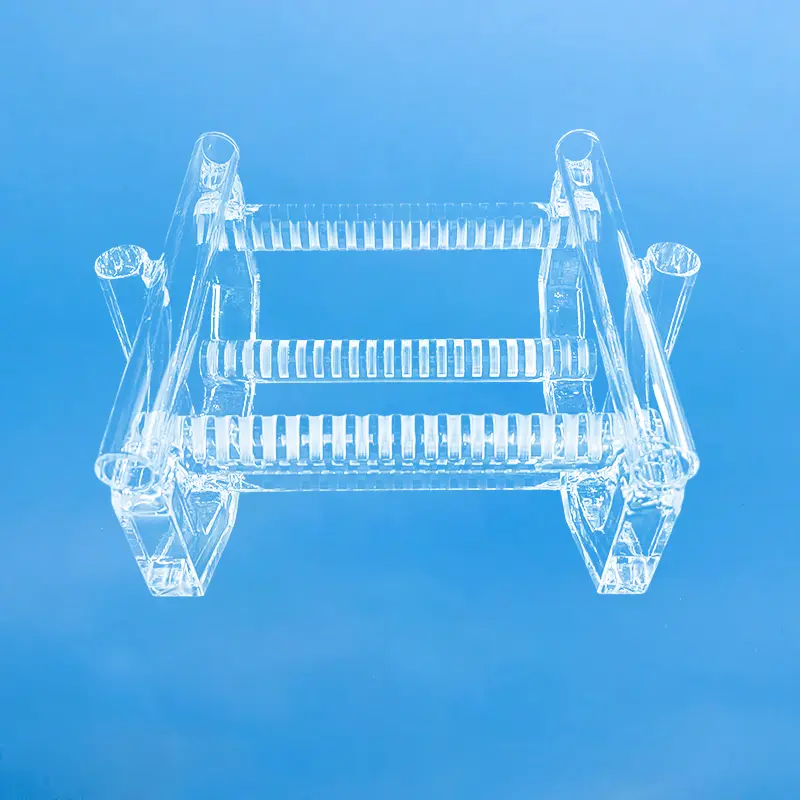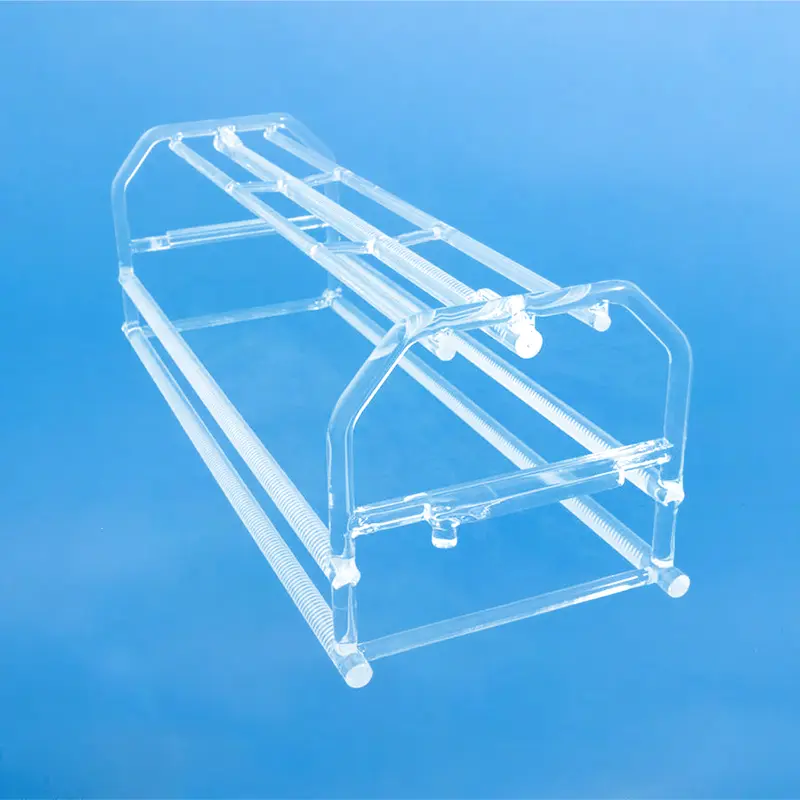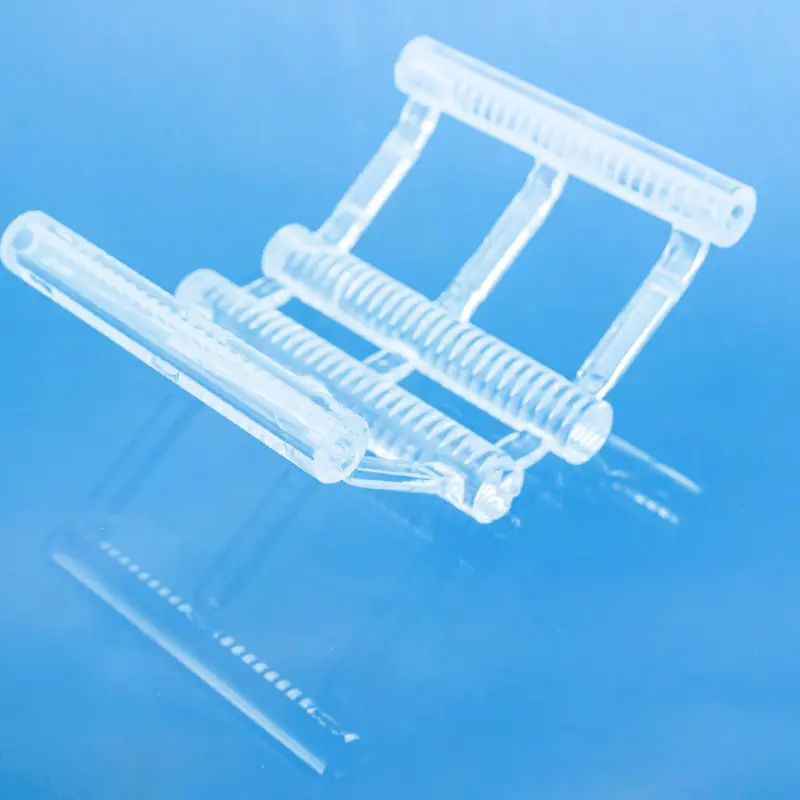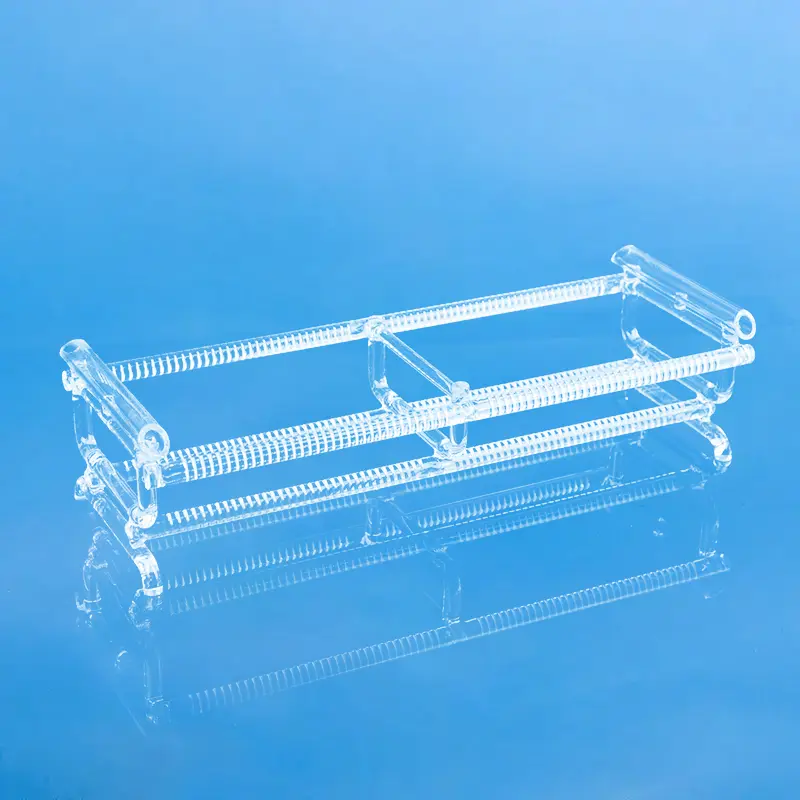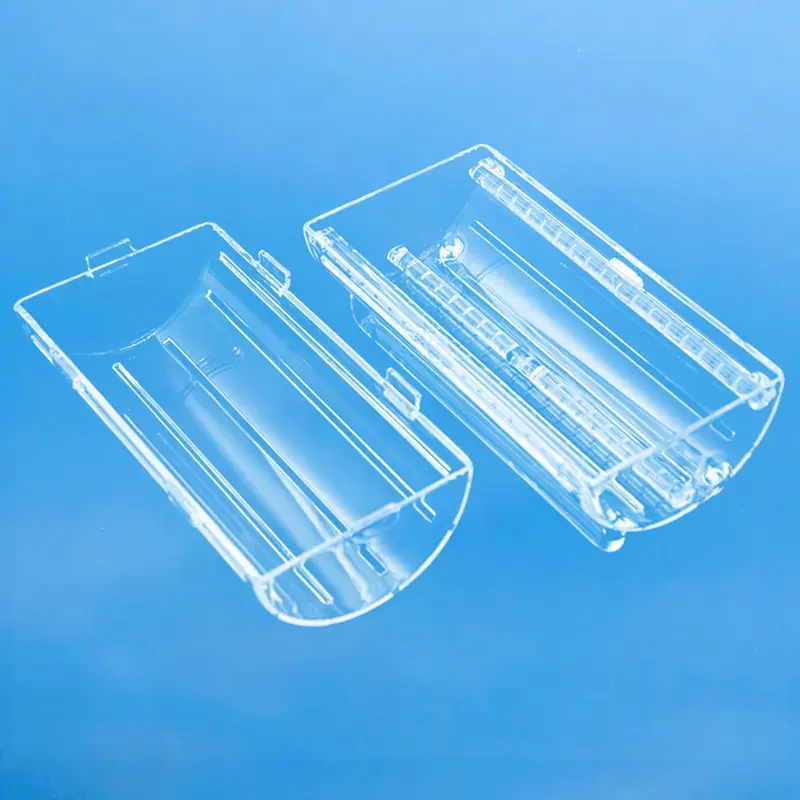Our high-purity quartz wafer boats are essential for precise wafer handling in demanding semiconductor and solar processes. Crafted from fused silica, they ensure minimal contamination and exceptional durability during high-temperature diffusion, oxidation, and annealing. Custom solutions are available to fit your specific manufacturing needs
| Property Content | Property Values |
|---|---|
| SiO2 | 99.99% |
| Density | 2.2×10³ kg/cm³ |
| Hardness | 5.5 - 6.5 Mohs' Scale 570 KHN 100 |
| Tensile Strength | 4.8×10⁷ Pa (N/mm2) (7000 psi) |
| Compression Strength | >1.1×10⁹ Pa (160,000 psi) |
| Coefficient of Thermal Expansion | 5.5×10⁻⁷ cm/cm·°C (20°C-320°C) |
| Thermal Conductivity | 1.4 W/m·°C |
| Specific Heat | 670 J/kg·°C |
| Softening Point | 1730°C (3146°F) |
| Annealing Point | 1210°C (2210°F) |
| Strain Point | 1120°C (2048°F) |
| Work Temperature | 1200°C (2192°F) |
| Electrical Resistivity | 7×10⁷ ohm cm (350°C) |
| Size | Customized |
| Logo | Customized Logo Accept |
High-Temperature Resistance
Quartz wafer boats can withstand the high-temperature environments encountered in semiconductor manufacturing, typically tolerating temperatures up to 1100 degrees Celsius and above.
High-Purity Material
Quartz wafer boats are made from high-purity quartz glass, generally exceeding 99.999% purity, ensuring that no impurities are introduced during semiconductor manufacturing.
Chemical Stability
Quartz wafer boats are inert to a variety of chemicals, maintaining stability in diverse chemical environments, and do not react with chemicals used in semiconductor processes.
Excellent Optical Properties
Quartz wafer boats possess excellent optical transmission, allowing light to pass through across the ultraviolet to infrared spectrum. This is crucial for semiconductor manufacturing processes that require optical inspection.
Application Scenario
High-Temperature Processing
Quartz wafer boats play a critical role in semiconductor manufacturing processes that require high-temperature treatment, such as diffusion and oxidation. They maintain stability at temperatures exceeding 300°C, preventing melting or deformation, thus ensuring the safety of the silicon wafers.
High-Temperature Zone Components
In the semiconductor field, quartz wafer boats are used as components in high-temperature zones, primarily for furnace tubes and boat frames used in processes like diffusion and oxidation. They come into direct or indirect contact with silicon wafers in high-temperature environments.
The primary material of quartz wafer boats is high-purity quartz glass, which contains an extremely high proportion of silicon dioxide (SiO₂), typically with a purity exceeding 99.999%. This high-purity quartz glass ensures that no impurities are introduced during semiconductor manufacturing, while also exhibiting excellent high-temperature resistance and chemical stability.
Quartz wafer boats primarily serve as tools for carrying and transporting silicon wafers in semiconductor manufacturing. They are used in critical process steps, such as high-temperature processing, cleaning, and chemical processing, ensuring the stability and safety of the silicon wafers. The high-temperature resistance and chemical stability of quartz wafer boats are crucial for ensuring product quality in semiconductor manufacturing.
The lifespan of quartz wafer boats is influenced by various factors, including frequency of use, temperature, and chemical environment. Generally, with proper usage and maintenance, quartz wafer boats can be reused multiple times. However, with increased use, they may gradually lose performance due to wear, contamination, or the formation of micro-cracks. It becomes necessary to replace the wafer boat to ensure process stability and product reliability. The specific lifespan needs to be determined based on actual use and maintenance conditions.
Frequently asked questions
We specialize in the end-to-end manufacturing of high-purity quartz glass components. Our core product lines include:
Quartz Tubing & Rods: A wide range of diameters and specifications.
Quartz Plates & Discs: Precision-cut and polished for optical and industrial use.
Quartz Labware: A full suite of standard and custom glassware, including beakers, flasks, and boats.
Semiconductor-Grade Quartz: High-purity components like process tubes and carriers for semiconductor fabrication.
Custom Fabricated Components: We can produce complex parts tailored to your unique designs and specifications.
Yes. Custom fabrication is at the core of our business. With over a decade of specialized experience, we partner with companies to provide expert OEM/ODM services. Our capabilities include welding, grinding, drilling, polishing, bending, and other precision processing techniques to create components that meet your exact requirements.
Quality is paramount in our manufacturing process. We are an ISO 9001:2015 certified manufacturer, ensuring that our processes meet international quality management standards.Our products also undergo rigorous SGS testing for purity and performance. We use high-purity raw materials (up to 99.998% SiO2) to produce fused quartz and fused silica products with exceptional thermal stability, high-temperature resistance, and chemical inertness.
We've streamlined our process to be as efficient as possible:
Submit Your RFQ: Send us your technical drawings, specifications, and requirements via our website contact form or email.
Rapid Response: You can expect an initial response within minutes and detailed communication within half an hour.
Design & Proposal: We will deliver a detailed design proposal and a competitive quote within 24 hours.
Prototyping & Production: Upon approval, we move swiftly from prototyping to full-scale production to meet your deadlines.
Partnering with Aoxin Quartz offers several key advantages:
Proven Expertise: With 10+ years in the industry, we have the technical knowledge to tackle complex challenges.
One-Stop Solution: We manage the entire production process, from sourcing high-purity raw materials to fabricating and finishing complex components.
Competitive Value: Located in a major quartz production hub, we leverage an efficient supply chain and advanced manufacturing to offer exceptional quality at a competitive price point.
Dedicated Partnership: Over 90% of our clients become long-term partners. We are committed to your success through responsive service, reliable quality, and innovative solutions.


